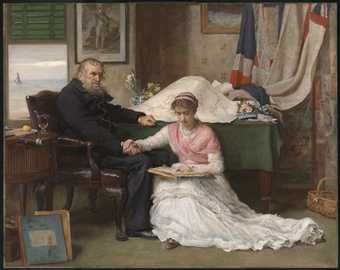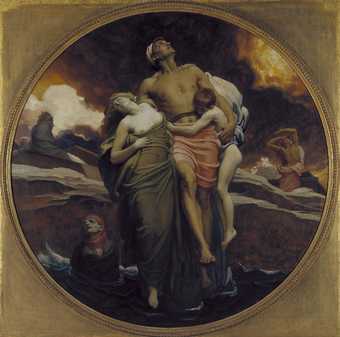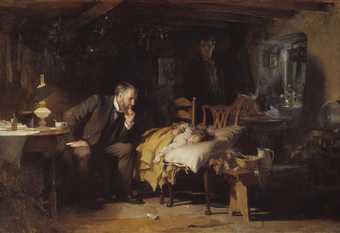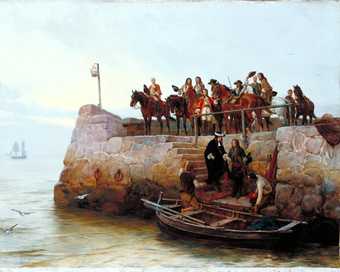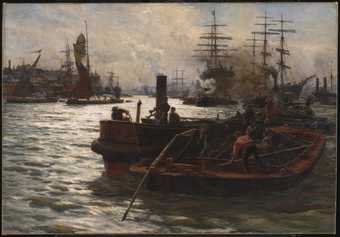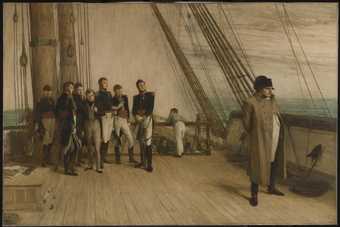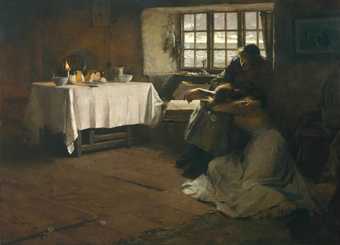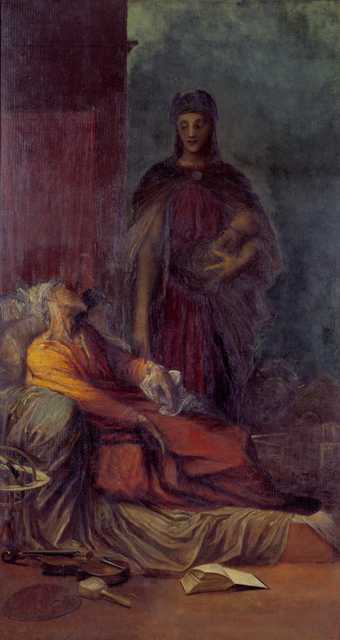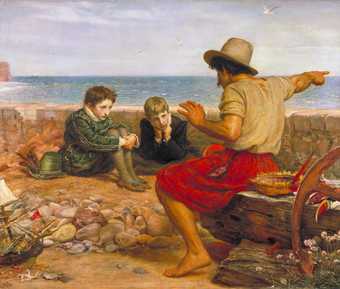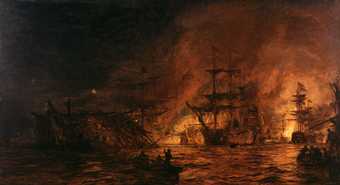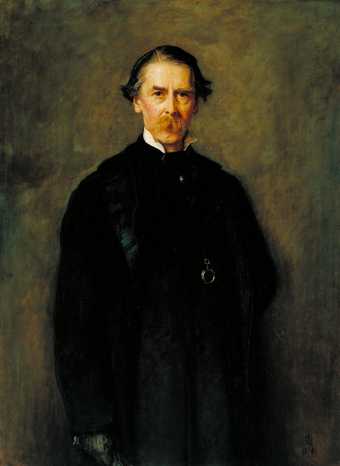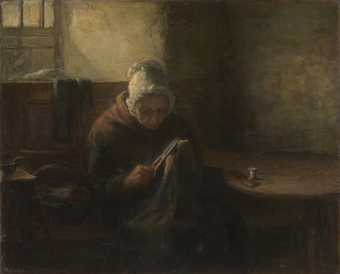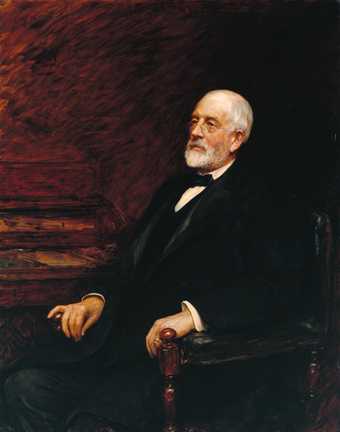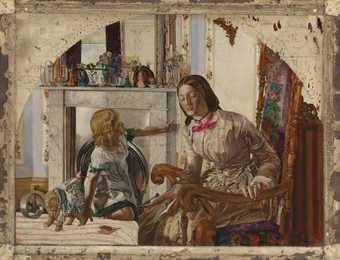
Not on display
- Artist
- The Hon. John Collier 1850–1934
- Medium
- Oil paint on canvas
- Dimensions
- Support: 2140 × 1835 mm
- Collection
- Tate
- Acquisition
- Presented by the Trustees of the Chantrey Bequest 1881
- Reference
- N01616
Display caption
In 1611, while on an expedition to find the North-West Passage, explorer Henry Hudson and his son were cast adrift by his mutinous crew. Their fate was unknown but raised the taboo of cannibalism. Collier hints at this by posing Hudson, eerily staring out at the viewer like Dante’s ‘Ugolino’ by Joshua Reynolds, 1773. Incarcerated with his sons, Ugolino eats them to survive, although the act is futile and all eventually die. Here the vast, Arctic landscape remains impassive to a terrifying human drama. Collier’s audience noted its relevance to ongoing Arctic explorations and the search for the North-West Passage.
Gallery label, July 2010
Does this text contain inaccurate information or language that you feel we should improve or change? We would like to hear from you.
Catalogue entry
N01616 THE LAST VOYAGE OF HENRY HUDSON 1881
Not inscribed.
Canvas, 84 1/2×72 1/4 (214·5×184).
Chantrey Purchase from the artist 1881.
Exh: R.A., 1881 (260); Sunderland, December 1921–January 1922 (3).
Repr: Sir Edward J. Poynter, The National Gallery, III, 1900, p.27; W.H. Pollock, ‘The Hon. John Collier’ in The Art Annual, 1914, p.19.
The R.A. catalogue contained the following passage: ‘Henry Hudson, the great navigator, made his last voyage to the Polar Seas in 1610. In the summer of 1611 his crew mutinied and set him adrift in an open boat with his son, John Hudson, and some of the most infirm of the sailors. They were never heard of more.’ According to The Dictionary of National Biography Hudson and his immediate following were cast adrift from the ship Discovery on 23 June 1611, after a struggle in which four men were killed.
Published in:
Mary Chamot, Dennis Farr and Martin Butlin, The Modern British Paintings, Drawings and Sculpture, London 1964, I
Explore
- history(5,776)
- actions: expressive(2,622)
-
- comforting(76)
- holding hands(147)
- boy(1,153)
- hypothermia(2)
- Hudson(1)
- Hudson, Henry(1)
- individuals: male(1,841)
- countries and continents(17,390)
- birth to death(1,472)
-
- death(685)
- boat, rowing(688)
- educational and scientific(1,494)
-
- explorer(28)
- sailor(121)
You might like
-
Sir John Everett Millais, Bt The North-West Passage
1874 -
Frederic, Lord Leighton And the Sea Gave Up the Dead Which Were in It
exhibited 1892 -
Sir Luke Fildes The Doctor
exhibited 1891 -
Andrew Carrick Gow A Lost Cause: Flight of King James II after the Battle of the Boyne
1888 -
William Lionel Wyllie Toil, Glitter, Grime and Wealth on a Flowing Tide
1883 -
Sir William Quiller Orchardson Napoleon on Board the Bellerophon
exhibited 1880 -
Frank Bramley A Hopeless Dawn
1888 -
George Frederic Watts The Messenger
c.1884–5 -
Sir John Everett Millais, Bt The Boyhood of Raleigh
1870 -
William Lionel Wyllie The Battle of the Nile
1899 -
Sir John Everett Millais, Bt Sir Henry Thompson, Bt
1881 -
Hugh Carter The Last Ray
c.1878 -
Sir Hubert Von Herkomer Sir Henry Tate
1897 -
William Lindsay Windus Too Late
1858 -
Frederic George Stephens Mother and Child
c.1854

